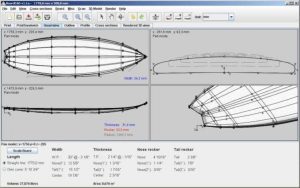Ynys-Hir – The hidden wildland of Wales
On the coast of Wales lies one of its most beautiful wildlife areas. The land of Ynys-Hir (Unuss-her) is owned by the Royal Society for the Protection of Birds (RSPB). Here there is a fabulous opportunity to see the wealth of wildlife that Wales has to offer. It is an incredible mix of woods of Oak, damp grazing and saltmarsh. Translated as “The long island” Ynys-Hir’s proximity to the Dyfi estuary means it is a haven for woodland and wader birds plus a great place to spot birds of prey.
Getting there presents no problem and you can arrive in comfort, and use it as a bird hide, if you look at using Welsh Coast Campervans. Why not have a quick look now at https://www.autotrader.co.uk/motorhomes/motorhome-dealers/welsh-coast-campers-llanelli-dpp-10012387 then read on as we look at the many types of birds you can expect to see at this stunning reserve. Many of these birds are migratory so you’ll only see them in the summer. Check the RSPB website for more details. Because it has such a wide range of habitats Ynys-Hir.
- Redstart – Once considered part of the Thrush family but now seen as more of a flycatcher. They love to eat insects so usually ground feeding. They have a bright orange breast and dark brown wing.
- Wood warbler – Tiny green bird with white wings and a yellow lemon breast from Africa. They are declining so Ynys-Hir can provide some protection due to its location and environment the birds love.
- Buzzard – A widely seen bird of prey. Amazing in soaring flight. They will cruise the sky with wings fully out riding the thermals and looking for food.
- Kestrels – Another bird of prey. Distinctive for their sky at hovering for long periods seeking out prey then swooping down to strike.
- Lapwings – Noticeable due their sleeked back crest out their head. Easy to spot in flight due to their round wing shape.
- Barn Owls – No mistaking this particular bird! It’s full heart shaped face, large eyes and white breast and wings make it a favourite.
Water birds.
Being on an estuary the site has a wealth of waders and waterfowl that frequent it. These examples are more active in the autumn and winter time.
- Sandpiper – tiny bird long beak. As the name suggests they are always dipping into the mud and sand on the look out for a tasty morsel.
- Curlew – The tell-tale mottled brown plumage gives this bird away. Like the Sandpiper it has a very long thin beak, though it is a much bigger bird.
- Pink foot Geese – A winter visitor as the weather in Greenland at that time doesn’t agree with it! Medium sized bird loud honk but only in flight. A grey plumage but as the name suggests pink feet.
It’s not just birds though there are Water voles, Rabbits, Grey Squirrels and the harder to spot Polecat and Otter. Get your binoculars and start recording!














Post Comment